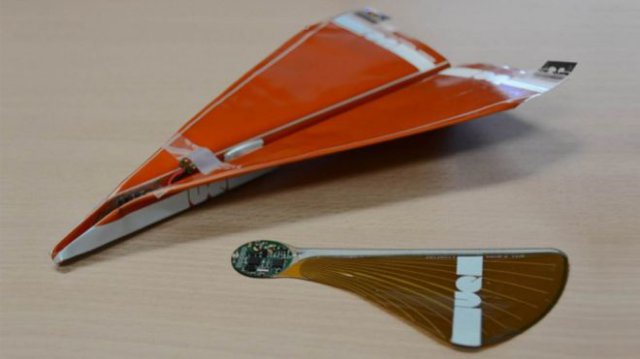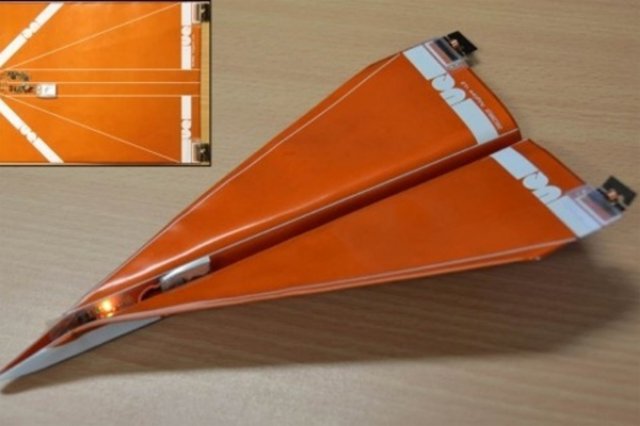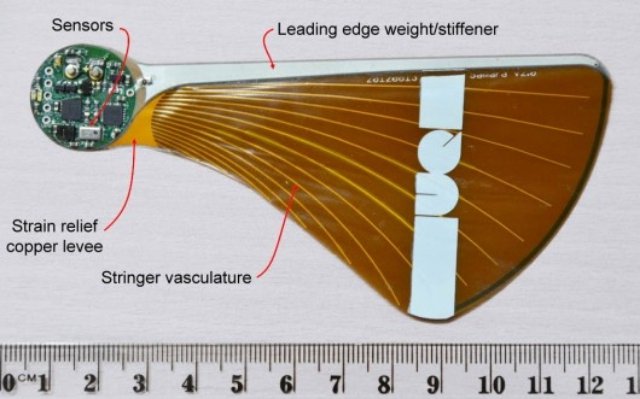 Led by Paul Pounds from the University of Queensland, a team of roboticists created two designs to help record atmospheric conditions in the event of a forest fire. The disposable, self-steering UAS are essentially sensor modules that can be dropped over a forested area to relay environmental data that could indicate potential for fire.
Led by Paul Pounds from the University of Queensland, a team of roboticists created two designs to help record atmospheric conditions in the event of a forest fire. The disposable, self-steering UAS are essentially sensor modules that can be dropped over a forested area to relay environmental data that could indicate potential for fire.
The first prototype looks exactly like a standard paper airplane, only this one’s made of biodegradable cellulose material. Once deployed from a larger aircraft, the so-called Polyplane UAS steers itself using tabs attached to the back of each wing.
 An onboard control system bends each tab to direct the craft as close as possible to a pre-determined landing area. Because the circuits can be ink-jet printed directly into the paper-like material, key components can be glued, instead of soldered, onto the lightweight, foldable circuit board.
An onboard control system bends each tab to direct the craft as close as possible to a pre-determined landing area. Because the circuits can be ink-jet printed directly into the paper-like material, key components can be glued, instead of soldered, onto the lightweight, foldable circuit board.
Made of the same biodegradable material, the second prototype mimics nature’s helicopter, the maple seed pod. Dubbed the Samara, this design incorporates a more traditional, antenna-equipped circuit board that’s attached to the “seed” part of the “helicopter blade.” Though it has a flexible wing, the Samara obviously can’t be steered like the Polyplane. On the other hand, its design allows for the sensor module to float gently to the ground, thus leaving the electronics unharmed and eliminates the need for expensive landing systems.
Photo: University of Queensland
Source: Fox News

